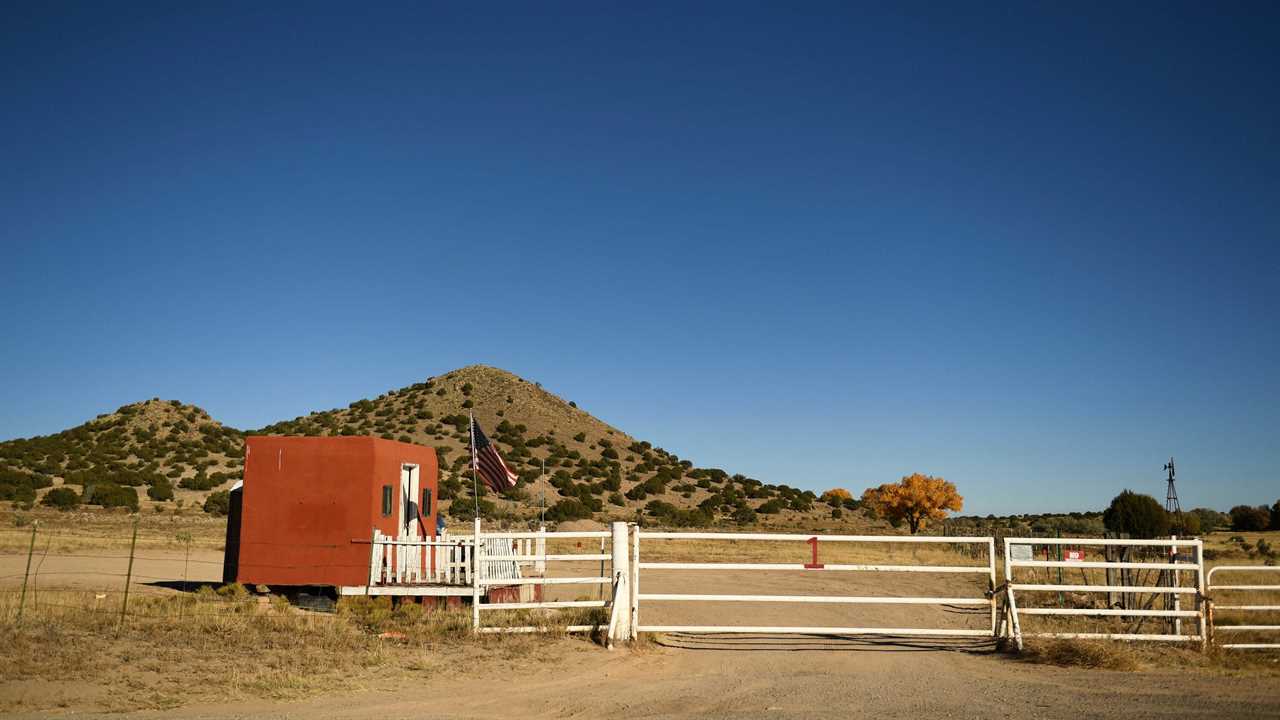
SANTA FE, N.M — Alec Baldwin was on the set of his latest film, a low-budget western called “Rust,” working on a scene in which his character, a grizzled outlaw named Harland Rust, finds himself in a small wooden church, cornered by a sheriff and a U.S. Marshal, and decides to shoot his way out.
Members of the small crew — including the director, cinematographer, cameraman and script supervisor — clustered around Mr. Baldwin inside the cramped, spartan set. The location is on a sprawling ranch outside Santa Fe, where Hollywood has been sending some of its biggest actors to don Stetsons and leather holsters to film westerns since 1955, when Jimmy Stewart made “The Man From Laramie” there.
As light poured through the church’s windows, casting slanted rays in the dust that swirled over the pews, a shadow fell, and the crew had to adjust the camera angle.
Then it was time for Mr. Baldwin, 63, who was seated on a pew, to practice his scene: a close-up of his hand as he slowly reached across his chest, drew a .45 Long Colt revolver from a shoulder holster and moved it toward the lens of the camera. The crew had been assured the gun was “cold,” meaning it held no live ammunition, according to court papers. In fact, investigators said, it was loaded with a live round. The error would prove fatal.
Suddenly there was a loud noise that the director, Joel Souza, later told a detective “sounded like a whip and then loud pop” as the gun went off.
The film’s cinematographer, Halyna Hutchins, 42, who was standing just feet away from Mr. Baldwin, to the left of the camera, grabbed her midsection and began to stumble backward, fatally struck in the chest by a lead bullet that investigators say passed through her and then wounded the film’s director, Mr. Souza, 48.
The questions of why there was any live ammunition on a movie set, where it is usually forbidden, and how a revolver loaded with a lethal round was placed in the hands of an actor, have started a complicated inquiry as law enforcement officials in New Mexico try to determine whether negligence on the set of “Rust” rose to the level of a crime. It has raised questions about firearm safety on sets, and whether proper procedures were followed on “Rust,” a troubled production where some members of the crew had quit before the shooting.
Those core questions about the gun and ammunition remain unanswered. But a reconstruction of the events based on court papers and interviews with members of the production, crew and law enforcement officials makes it clear that a cascading series of mistakes led to the fatal moment just before 1:48 p.m. on Oct. 21.
A Delayed Start, After Trouble on the Set
The “Rust” crew started work before dawn, at about 6:30 a.m., and the crew gathered for breakfast at Bonanza Creek Ranch, where the movie was being filmed.
But a major problem had emerged the night before: Six members of the camera crew had sent in resignation letters, citing issues including a lack of hotel accommodations and late paychecks.
The tensions on the set came amid a broader national labor battle over working conditions in the industry. As “Rust” went into its second week of work on location in mid-October, the union that represents members of film crews was negotiating a new contract with production studios. The union, the International Alliance of Theatrical Stage Employees, voted this month to authorize a nationwide strike if talks failed.
Mr. Baldwin had arrived on the set about a week after filming had started in early October, and had spent time working on his horseback riding, rehearsing scenes and practicing with guns, including trying to simulate the recoil that is missing when live rounds are not used.
Mr. Baldwin was not only the star of the film, which was expected to cost about $6.5 million to make, but one of its producers, along with Ryan Winterstern, Matt DelPiano, Anjul Nigam, Ryan Donnell Smith and Nathan Klingher.
After the union’s leaders reached a tentative agreement with the studios, Mr. Baldwin posted an Instagram video — filmed from Santa Fe — in which he urged the rank-and-file members to strike if they were unhappy with the deal.
Tensions on the set of “Rust” were building, though. And just days before the fatal shooting, at least two accidental gun discharges on set had put crew members on edge.
One former member of the “Rust” crew said in an interview that he had been alarmed by the safety conditions on the production. “It was the most unorganized set I’ve ever seen,” said the crew member, who was granted anonymity because he feared that speaking out would harm his future work prospects.
He said there had been concern about the limited experience of the film’s armorer, who was in charge of the weaponry on the set: Hannah Gutierrez-Reed, who was 24 years old and just starting her career as a head armorer.
Ms. Gutierrez-Reed’s lawyers, Jason Bowles and Robert Gorence, said in a statement Friday that Ms. Gutierrez-Reed was working two different jobs on the film, “which made it extremely difficult to focus on her job as an armorer.’’ (The production did not immediately respond to a request for comment on the statement.)
The lawyers charged that “the whole production set became unsafe due to various factors, including lack of safety meetings,” and suggested that others had been responsible for previous accidental discharges on the set: “The first one on this set was the prop master, and the second was a stunt man after Hannah informed him his gun was hot with blanks.”






